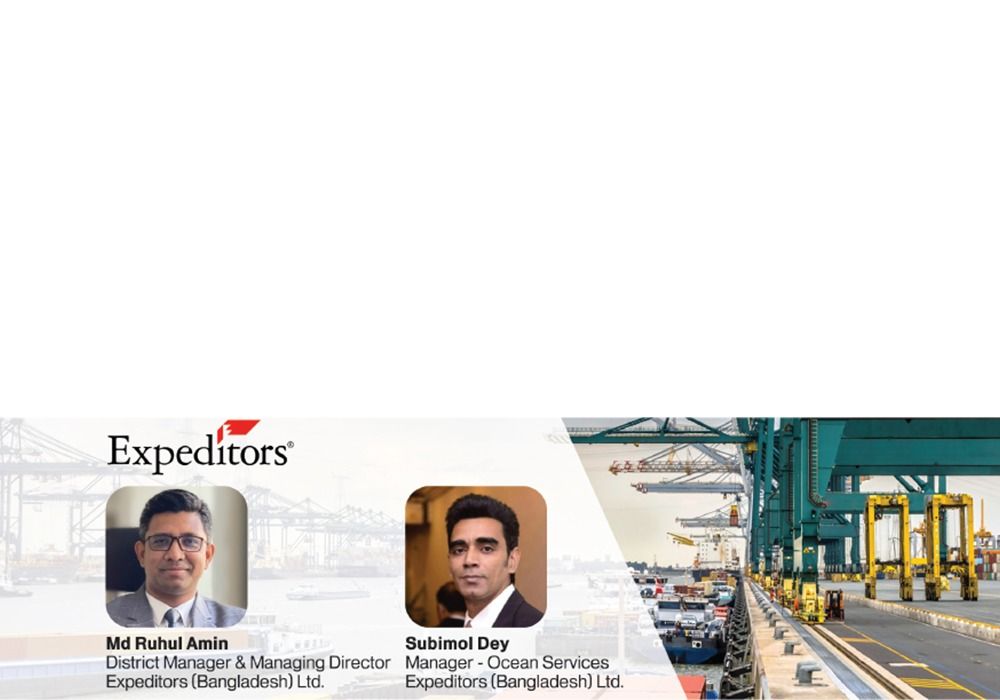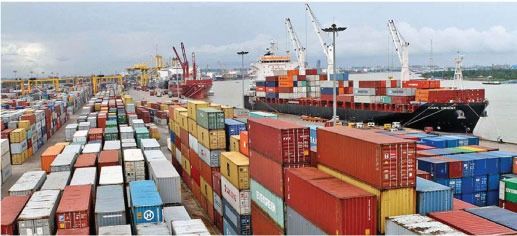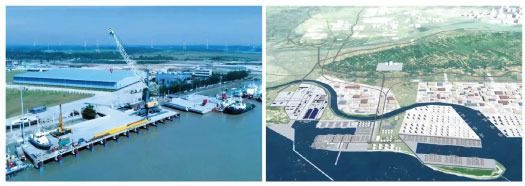- info@ficci.org.bd
- |
- +880248814801, +880248814802
- Contact Us
- |
- Become a Member
- |
- |
- |
- |
- |

Bangladesh is uniquely positioned to become a significant player in global trade due to its strategic location along major maritime routes. With a growing economy and increasing demand for exports, the country has enormous potential to expand its international trade footprint. However, despite these advantages, Bangladesh's port infrastructure faces several pressing challenges that hinder its ability to fully capitalize on this opportunity. Congestion, outdated facilities, and a lack of technological integration are key obstacles to efficient trade opera- tions. By addressing these issues through strategic investments, technological upgrades, and policy reforms, Bangladesh can unlock new avenues for economic growth.

Challenges in Port Infrastructure
At the heart of Bangladesh's port infrastructure issues is Chattogram Port, the country's busiest and most crucial maritime gateway. Responsible for handling over 90% of Bangladesh's seaborne trade, the port is overwhelmed by growing cargo volumes. Chronic congestion leads to long waiting times for vessels, increased shipping costs, and delays in the supply chain. This inefficiency not only hampers export competitiveness but also affects the overall ease of doing business.
One of the root causes of this congestion is aging infrastructure. Much of the port's equipment and operational systems are outdated and rely heavily on manual labor. The lack of modern container handling equipment, inadequate berthing facilities, and slow cargo clearance processes contribute to the bottlenecks. Additionally, limited draft depth at the port restricts the size of vessels it can accommodate, forcing larger ships to bypass Bangladesh and dock in neighboring countries.
Compounding the problem is the limited adoption of automation and digital technologies. Manual documenta- tion, paper-based systems, and insufficient cargo tracking capabilities slow down the entire logistics process, resulting in inefficiencies that undermine Bangladesh's trade competitiveness.

Strategic Investments and Future-Ready Ports
Recognizing the urgent need for modernization, the government has initiated several transformative projects aimed at expanding capacity and improving efficiency. Among the most significant are the Payra Port and the Matarbari Deep Seaport.
Payra Port, still under development, is designed to ease the pressure on Chattogram Port by offering an alternative trade route. However, it is the Matarbari Deep Seaport that holds the most promise for transforming Bangladesh's trade capabilities. With the ability to handle large, deep-draft vessels, Matarbari will enable direct shipping to and from global ports, reducing dependency on transshipment hubs in Singapore and Colombo. This will not only lower shipping costs but also improve turnaround times and supply chain efficiency.
In tandem with physical infrastructure expansion, Bangladesh must focus on automation and digitalization. Implementing advanced cargo management systems, integrating Al for logistics planning, and using blockchain for transparent documentation can greatly improve port operations. These technologies reduce human error, accelerate cargo handling, and provide real-time tracking for traders and shipping lines.

Economic Opportunities from Modernization
Modernizing port infrastructure goes beyond solving logistical issues-it has profound implications for national economic growth. Four key opportunities emerge:
1. Increasing Port Capacity: Expanding port terminals, deepening harbors, and upgrading equipment will accommodate larger vessels and higher cargo volumes. This will reduce port congestion, attract global shipping lines, and position Bangladesh as a more competitive trade hub in the region.
2. Technological Integration: Embracing automation, Al, and blockchain will enhance operational efficiency, reduce labor dependency, and speed up cargo processing. Improved logistics translate into cost savings and faster trade flows, making Bangladesh more attractive to international investors.
3. Sustainability Initiatives: Ports have a critical role in reducing environmental impact. Adopting renewable energy, electrifying equipment, and implementing eco-friendly waste management systems will align Bangladesh's ports with global sustainability standards. These green credentials can enhance the country's image as an environmentally responsible trade partner.
4. Public-Private Partnerships (PPP): Leveraging private investment and expertise through PPPs will accelerate infrastructure development and bring in cutting-edge innovations. A strong PPP framework can ensure efficient project execution, cost-effective solutions, and long-term operational excellence.
Policy Recommendations for Accelerated Development
To fully realize these opportunities, coordinated policy actions are essential. Below points can be consider:
Investing in advanced technologies must be a top priority. Modern ports rely on seamless data flows and integrated systems, which demand robust digital infrastructure and skilled personnel.
Encouraging public-private partnerships through favorable regulatory frameworks will attract both local and foreign investors. Simplifying procedures, ensuring transparency, and offering incentives will make the sector more appealing to private entities.
port practices should be mandated and incentivized. Offering tax breaks or subsidies for ports that adopt solar power, electric vehicles, or zero-emission technologies can drive widespread adoption of sustainable practices.
Expanding physical infrastructure remains fundamental. Continued investment in dredging, terminal expansion, and intermodal transport connectivity will help handle the increasing trade volume and reduce regional disparities in trade access.
Enhancing port security and resilience is crucial in today's complex trade environment. Modern surveillance systems, cybersecurity protocols, and disaster-response mechanisms will protect assets and ensure uninterrupted trade operations.
Simplifying trade procedures through digitized customs processes and streamlined regulations will reduce delays and improve Bangladesh's ranking in global trade indices.

Learning from Global Success Stories
Bangladesh can draw valuable lessons from global leaders in port infrastructure development:
• Singapore Port has set the benchmark for automation and efficiency. By implementing automated cranes and digital supply chain platforms, it has become one of the world's most efficient ports.
• Port of Rotterdam is a model for sustainability. Its use of renewable energy, electric vehicles, and digital integration demonstrates how environmental responsibility and efficiency can go hand in hand.
• Greater Bay Area Ports in China (including Hong Kong, Shenzhen, and Guangzhou) showcase the power of technology and regional integration. Their role in China's Belt and Road Initiative highlights the importance of connectivity and coordinated logistics.
• Port of Los Angeles has leveraged green technology and digital innovation to maintain its status as the busiest container port in the U.S. Its success proves that modernization can also be environmentally sustainable.
Conclusion
Bangladesh stands at a critical juncture in its journey toward becoming a global trade hub. While its port infrastructure faces challenges like congestion, outdated systems, and limited automation, there is a clear path forward. Strategic investments in infrastructure, embracing digital transformation, adopting green technologies, and fostering public-private partnerships will unlock new economic opportunities. By learning from global best practices and implementing bold reforms, Bangladesh can transform its ports into engines of trade-led growth, enhancing its global competitiveness and driving long-term prosperity.





